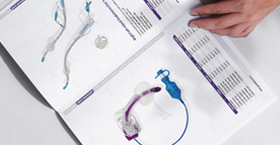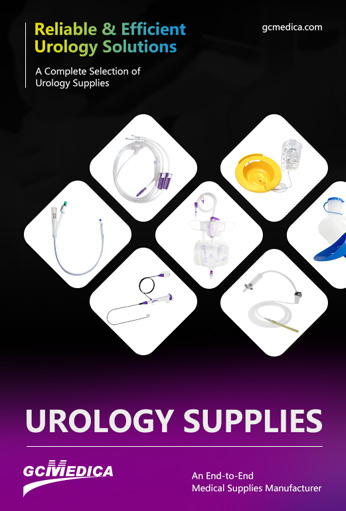A variety of bladder drainage equipment is available to manage urinary output, prevent complications, and improve patient comfort in diverse clinical settings. These devices channel urine from the bladder into a sealed receptacle, allowing accurate monitoring of volume, color, and quality. Selection depends on factors such as patient mobility, risk of infection, duration of use, and anatomical considerations. Proper assembly, insertion (where applicable), securement, and maintenance of a closed drainage system are essential to minimize urethral trauma, leakage, and catheter-associated urinary tract infections (CAUTIs).
Commonly used bladder drainage systems include:
Indwelling (Foley) Catheter with Drainage Bag
A soft tube inserted via the urethra or suprapubic tract; balloon-retained in the bladder. Ideal for continuous drainage and precise output measurement in perioperative or critical-care settings.Intermittent (Straight) Catheter
A single-use or reusable tube inserted periodically to drain the bladder and then removed. Preferred when short-term drainage is needed with lower CAUTI risk than indwelling catheters.External (Condom) Catheter with Leg Bag
A non-invasive silicone sheath applied over the penis, connected to a lightweight leg bag. Suitable for male patients with intact urethral function who require mobility and lower infection risk.Suprapubic Catheter with Night Bag
A catheter tunneled through the lower abdominal wall into the bladder; anchored by a retention cuff. Often used when urethral catheterization is contraindicated or long-term drainage is needed.Urostomy and Pouch System
Surgical diversion of urine through a stoma into a sealed ostomy pouch. Employed when bladder function is severely impaired or removed.
Below is a concise summary table of bladder drainage equipment and their key characteristics:
| Equipment Type | Description | Bag Capacity | Indications | Care Highlights |
|---|---|---|---|---|
| Foley Catheter + Standard Bag | Balloon-retained tube via urethra/suprapubic tract | 500 mL – 2 L | Continuous monitoring, perioperative, immobilized patients | Aseptic insertion, secure tubing, empty every 8 hours |
| Intermittent Catheter | Straight tube inserted on demand; removed after drainage | N/A | Temporary retention relief, neurogenic bladder, UTI prevention | Clean technique, schedule every 4–6 hours |
| Condom Catheter + Leg Bag | External sheath with adhesive or strap; connected to smaller leg bag | 500 mL | Male incontinence, active patients | Skin inspection, change sheath daily, avoid kinks |
| Suprapubic Catheter + Night Bag | Tubing through abdominal wall; cuff-secured | 2 L night bag | Urethral obstruction, long-term use, urethral trauma | Stoma care, secure catheter, monitor insertion site |
| Urostomy Pouch System | Surgical bladder diversion to abdominal stoma into a sealed pouch | 1 L – 2 L | Bladder removal, chronic dysfunction, cancer | Stoma hygiene, pouch change every 3–7 days, monitor skin |
Selecting the appropriate device involves collaboration among urology specialists, nursing staff, and patients. Education on recognizing signs of infection, maintaining equipment integrity, and adhering to replacement schedules promotes safe, effective bladder management.
| Urology Supplies > |


 Français
Français Español
Español Products
Products

 About Us
About Us












